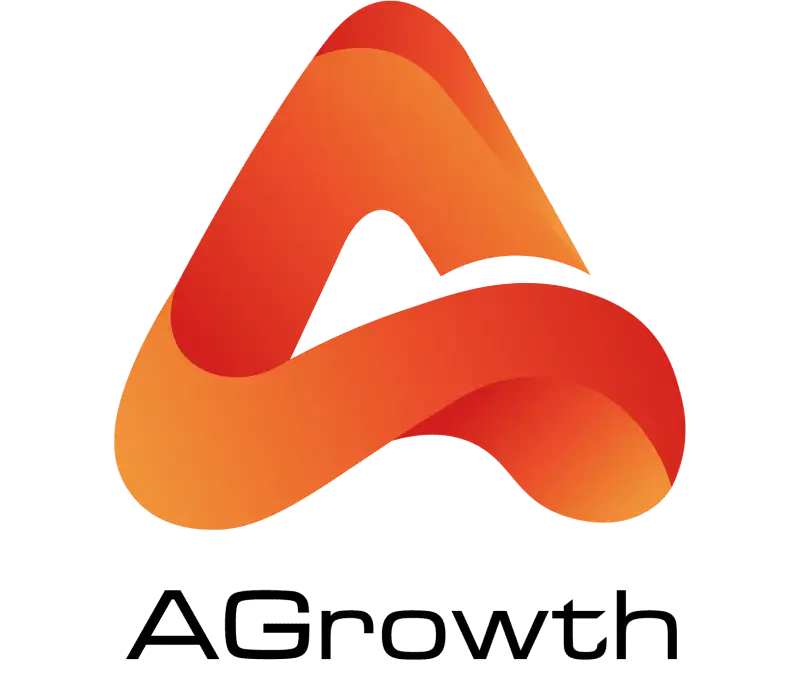
Table of Contents
Meta Business Suite: Ultimate Guide to Managing Efficiently
Running multiple Facebook Pages, Instagram accounts, and ad campaigns can get messy if you juggle different tools. That’s why Meta Business Suite was created. It’s an all-in-one platform that helps advertisers, agencies, and business owners manage content, ads, and customer interactions across Meta’s ecosystem in one streamlined dashboard.
Meta itself describes the tool as “a free platform that allows you to manage your Facebook and Instagram accounts, messages, ads, and insights in one place”. For advertisers and brands, it’s more than a time-saver, it’s a command center that can directly impact efficiency and ROI.
In this article, we’ll break down what Meta Business Suite is, its features, how to set it up, and practical tips for getting the most out of it.
What is Meta Business Suite?
Meta Business Suite is a free management tool offered by Meta that centralizes control of Facebook and Instagram Pages, Messenger, and ad accounts. Instead of switching between apps or dashboards, everything is organized in one interface—publishing, scheduling, messaging, advertising, analytics, and more.
It was rolled out to replace Facebook’s earlier tools (Page Manager app, Creator Studio) and expand on the features of Meta Business Manager. While Business Manager is more focused on permissions, assets, and account ownership, Meta Business Suite is designed for day-to-day social media and ad operations.
Is Meta Business Suite different from Facebook (Meta) Business Manager?
Yes. While the two tools complement each other, they serve different purposes:
-
Meta Business Manager is about structure—assigning ownership, controlling assets, managing roles, and ensuring secure access.
-
Meta Business Suite is about execution—creating posts, scheduling content, replying to messages, running ads, and analyzing results.
If you want a deep dive into the organizational side, check out our guide to Meta Business Manager.
Benefits of using Meta Business Suite
Marketers and advertisers use Business Suite because it:
-
Saves time with centralized scheduling and publishing.
-
Improves collaboration by allowing admins to assign different roles.
-
Enhances visibility with cross-platform analytics for Facebook and Instagram.
-
Streamlines communication with a unified inbox for Messenger, Instagram DMs, and Facebook comments.
-
Supports advertising with integrated ad management.
Meta Business Suite Features
Meta Business Suite comes packed with tools designed for professional content and ad management. Here are the most valuable features:
1. Content Scheduling
You can draft, schedule, and publish posts and Stories across Facebook and Instagram. The scheduling calendar provides a bird’s-eye view of your content strategy. This ensures consistency—a critical factor for ad performance and audience trust.
2. Unified Inbox
Instead of bouncing between Messenger and Instagram DMs, you get a single inbox. This not only saves time but also prevents customer inquiries from slipping through the cracks. Features like saved replies and labels make customer care scalable.
3. Performance Insights
The Insights tab provides metrics like reach, engagement, audience demographics, and ad results. Meta Business Suite helps marketers analyze performance across accounts in one view. This cross-platform visibility is invaluable for advertisers optimizing spend.
4. Ad Management
You can create, monitor, and adjust ads directly from Business Suite. While Meta Ads Manager remains the advanced option for complex campaigns, Business Suite allows quick ad setup, boosting posts, and reviewing results—all within the same dashboard.
How to Add Facebook Pages to Meta Business Suite
To fully use the platform, you’ll need to connect your assets. Adding a Facebook Page is straightforward:
-
Go to Business Settings in Meta Business Suite.
-
Under Accounts > Pages, click Add.
-
Choose whether to Add a Page, Request Access, or Create a New Page.
-
Confirm ownership or request admin approval.
Once connected, you can schedule posts, run ads, and access analytics for that Page.

How to Add Instagram Accounts to Meta Business Suite
Connecting your Instagram account to Meta Business Suite allows you to manage publishing, ads, and customer messages from one place. This integration is essential for advertisers who run cross-platform campaigns and want consistent analytics.
1. Navigate to Settings
From your Meta Business Suite dashboard, locate and click on the 'Settings' gear icon in the bottom-left menu.
2. Access Business Assets
Within the Settings menu, find the 'Business assets' section. This is the central hub for all the Pages, accounts, and other assets connected to your business.
3. Add a New Asset
Click on the 'Add Assets' button, which is typically located in the top-right corner of the Business Assets screen.
4. Select Instagram Account
A pop-up window will appear with a list of asset types you can add. Choose 'Instagram account' from the options provided.
5. Authorize the Connection
You will be prompted to review and accept the terms and conditions for connecting your Instagram account. After accepting, click 'Claim Instagram Account'.
6. Log In to Instagram
A new window will open, prompting you to log in with your Instagram username and password. Enter your credentials and log in. If you are already logged into Instagram in the same browser, you may only need to confirm the account you wish to connect.
7. Confirm and Finish
Once you have successfully logged in and authorized the connection, the account will be added to your Business Assets. You can now return to your main dashboard and will have full access to manage your newly connected Instagram account alongside your Facebook Page.

How to start using Meta Business Suite
Getting up and running with Meta Business Suite is a logical progression for any advertiser looking to centralize their operations. Based on the comprehensive guide from Sprout Social, here is a detailed breakdown of the initial steps to take:
Connect and manage your ad accounts
Once your Facebook Page and Instagram account are connected, the next crucial step is to integrate your ad accounts. This will allow you to run and monitor campaigns directly through the suite.
-
Navigate to Settings within your Meta Business Suite.
-
From the left-hand menu, select Ad accounts.
-
You will be presented with three options: Add an ad account, Request access to an ad account, or Create a new ad account.
-
Add an Meta ad account: Choose this if you are the owner of an existing ad account. You will need the ad account ID.
-
Request access to an ad account: This is for agencies or individuals who need permission to work on an ad account owned by another business.
-
Create a new ad account: If you're starting from scratch, this option will guide you through setting up a new ad account for your business.
Properly connecting your ad accounts is fundamental to leveraging the full advertising capabilities of the platform.

Fill in basic info about your organization
Providing complete information about your business not only helps Meta understand your organization but also adds a layer of professionalism to your presence.
-
Go to Settings in your Business Suite.
-
Click on Business info.
-
Here, you can edit essential details such as your business name, address, phone number, and website.
-
Ensure all information is accurate and up-to-date, then click Save.
This information can be used across your Meta assets, so maintaining its accuracy is important.

Explore and plan content
With the foundational elements in place, you can now dive into the content planning and scheduling features. This is where you can start to build a cohesive content strategy.
-
From the main menu, navigate to the Planner. This will display a calendar view of your scheduled and published content.
-
Click on Create post to start drafting a new piece of content.
-
You can choose to publish to your Facebook Feed, Instagram Feed, or both simultaneously.
-
Add your text, images or videos, and any relevant links. The platform also provides tools for A/B testing different versions of your post to see what performs best.
-
Instead of publishing immediately, select Schedule and choose the optimal date and time for your post to go live.
How to manage users as an Admin in Business Suite
As your team grows, you'll need to grant access to Meta Business Suite to other individuals. The platform provides robust user management capabilities, allowing you to control who can do what.
Properly managing user permissions is key to maintaining the security and integrity of your business assets.
How to add users
Inviting team members to your Business Suite is a simple process.
-
Go to Settings and select the People tab.
-
Click on Add people.
-
Enter the email address of the person you wish to invite. It's important to use the email address associated with their Facebook account.
-
Click Next and proceed to set their permissions.

How to set user permissions
Meta Business Suite offers different levels of access to ensure that team members only have the permissions they need to perform their roles.
-
After entering the user's email, you'll be prompted to assign them a role, such as Employee (default) or Admin.
-
You will then select which assets (Facebook Pages, Instagram accounts, ad accounts) you want to assign to them.
-
For each asset, you can specify the level of access, from basic tasks like creating posts to full control.
-
Review the invitation to ensure the permissions are correct and then click Send request. The user will receive an email to accept the invitation.
How to remove users
If a team member leaves your organization or no longer requires access, you can easily remove them.
-
In the People tab under Settings, find the user you wish to remove.
-
Click on their name and then select Remove.
-
You will be asked to confirm the removal. This action will revoke their access to your Business Suite and all associated assets.

How to use social media analytics in Meta Business Suite
The 'Insights' tab in Meta Business Suite is a powerful analytics hub that transforms raw data into a clear picture of your social media performance. For data-driven advertisers, mastering this section is key to optimizing strategy, proving ROI, and understanding your audience on a deeper level. It provides a consolidated view of metrics across both your Facebook Page and Instagram account.
Here’s a breakdown of how to navigate and leverage the key areas within Insights:
Overview
Overview tab provides a high-level, at-a-glance snapshot of your overall performance across a selected time period. Key metrics you'll find here include:
-
Facebook Page reach & Instagram reach: The total number of unique users who saw your content.
-
Audience Growth: Tracks your new followers and fans, showing the net change in your audience size.
-
Content Interactions: A summary of engagement metrics like reactions, comments, and shares.
Results
The Results tab allows you to dig deeper into your performance metrics. It's designed to help you understand the effectiveness of your efforts in achieving business objectives. You can track key performance indicators (KPIs) over time, with a focus on:
-
Reach: Analyze trends in both paid and organic reach to understand the visibility of your content.
-
Profile and Page Visits: See how many people are actively navigating to your profile or Page, indicating a higher level of interest.
Use this section to measure the direct outcomes of your campaigns and content strategy, helping you to report on progress towards specific goals.
To track off-platform actions like website purchases or lead form submissions, you'll need to set up tracking events within the Meta Events Manager.
Audience
Understanding who you are talking to is fundamental to creating resonant content. The Audience tab provides crucial demographic and behavioral data about your followers. You can analyze:
-
Current Audience: See a detailed breakdown of your followers by age, gender, and location (top cities and countries). This is invaluable for ensuring your content is aligned with your target demographic.
-
Potential Audience: Meta provides insights into a potential audience you could reach with advertising, based on your current followers and Page category. This is a powerful tool for planning audience expansion campaigns. Once you understand who your potential audience is, the next step is to master Facebook Ads target options to effectively reach them with your campaigns.
Benchmarking
One of the most strategic features within Insights is Benchmarking. This allows you to compare your performance against other businesses similar to yours. You can add specific competitors or let Meta suggest businesses to benchmark against. Key areas of comparison include:
-
Audience Size: See how your follower growth compares to others in your industry.
-
Content Volume: Track how frequently your competitors are posting.
Content
This is where you analyze the performance of individual pieces of content. The Content tab shows you a feed of all your published posts, Stories, and Reels, allowing you to sort and filter by key metrics like:
-
Reach
-
Likes and Reactions
-
Comments
-
Shares
-
Link Clicks
By identifying your top-performing posts, you can understand what resonates most with your audience and replicate that success in future content. While looking at raw Link Clicks is useful, analyzing your Facebook Ads CTR will give you a clearer picture of how compelling your ad creative truly is.
AGROWTH - META AGENCY ACCOUNT
⭐ Managed campaigns with expert guidance
⭐ Flexible invoice-based billings, custom top-ups
⭐ High resistance to suspension via agency tier
⭐ Quick fund transfer to new account if needed
⭐ Priority support via Facebook Partner channel
⭐ Lower fees from 3%
Top Tips to Manage Meta Business Suite
Meta Business Suite has powerful features, but to get the most out of it, you need to use it strategically. These best practices will help you save time, improve collaboration, and maximize the impact of your campaigns.
Use the Content Planner Proactively
Don’t just post on the fly. Take advantage of the Planner tool to map out your weekly or monthly content calendar. This helps you stay consistent, align with campaign timelines, and spot gaps before they affect performance.
Optimize Posting Times with Insights
Review your audience insights to determine when your followers are most active. Scheduling posts at those times can improve organic reach and engagement across both Facebook and Instagram.
Automate Responses in the Unified Inbox
The Inbox allows you to manage Facebook comments, Messenger, and Instagram DMs in one place. Set up saved replies and automated responses for FAQs (like shipping info or business hours) to speed up customer service without sacrificing quality.
Regularly Audit User Roles and Permissions
Security and control are critical, especially if you work with agencies or freelancers. Perform a regular audit of who has access to your Pages, ad accounts, and Instagram profiles. Remove outdated users and adjust permissions based on responsibilities.
Combine Organic and Paid Content Strategies
Don’t treat organic and paid campaigns separately. Business Suite lets you see performance across both. Use high-performing organic posts as test content, then boost them into ads for broader reach.
Track Performance Holistically
Check Insights regularly—not just ad metrics, but also engagement, follower growth, and cross-platform trends. Tracking both organic and paid content in one view allows marketers to optimize resources more effectively.
Manage Multiple Platforms in One Workflow
Even if you only run campaigns on Facebook now, connect Instagram early. This unlocks cross-posting, unified reporting, and simplifies ad targeting. For teams, managing both platforms in one dashboard avoids duplicated effort. To expand your reach even further beyond Meta's apps, consider leveraging the Facebook Ads Audience Network to show your ads across a wide range of partner apps and websites.
Leverage Mobile Access for Agility
Download the Meta Business Suite mobile app so you can monitor campaigns, respond to messages, and approve posts on the go. This is especially useful for advertisers running real-time campaigns.
Use Labels and Filters to Organize
If you receive a high volume of customer messages, apply labels and filters in the inbox (e.g., “VIP Customer,” “Support Request,” “Ad Lead”). This keeps your communication organized and ensures important conversations don’t get lost.
FAQs
How To Create An Event In Meta Business Suite?
To create an event, navigate to the 'Events' section from the main menu. From there, you can create a new event, add all the necessary details such as the event name, date, time, location, and a description. You can also add a cover photo and co-hosts.
Can I Schedule Reels On Meta Business Suite?
Yes, you can schedule both Facebook and Instagram Reels directly within Meta Business Suite. When you are creating a Reel, instead of publishing it immediately, you will have the option to schedule it for a future date and time.
How do I get out of Meta Business Suite back to Facebook?
If you need to switch back to the classic Facebook interface for your Page, you can typically find an option in the main menu of Business Suite to 'Go to your Page'. This will take you back to the standard Facebook view.
Can I manage multiple businesses in one Meta Business Suite account?
Yes, you can manage multiple business portfolios from a single Meta Business Suite account. You can easily switch between different businesses from the dropdown menu in the top left corner of the dashboard.
How can I use the planner in Meta Business Suite effectively?
To use the planner effectively, map out your content themes in advance. Use the calendar view to ensure a good mix of content types (e.g., promotional, educational, behind-the-scenes). Also, pay attention to the suggested optimal posting times to maximize your reach and engagement.
Read more:










Your comment